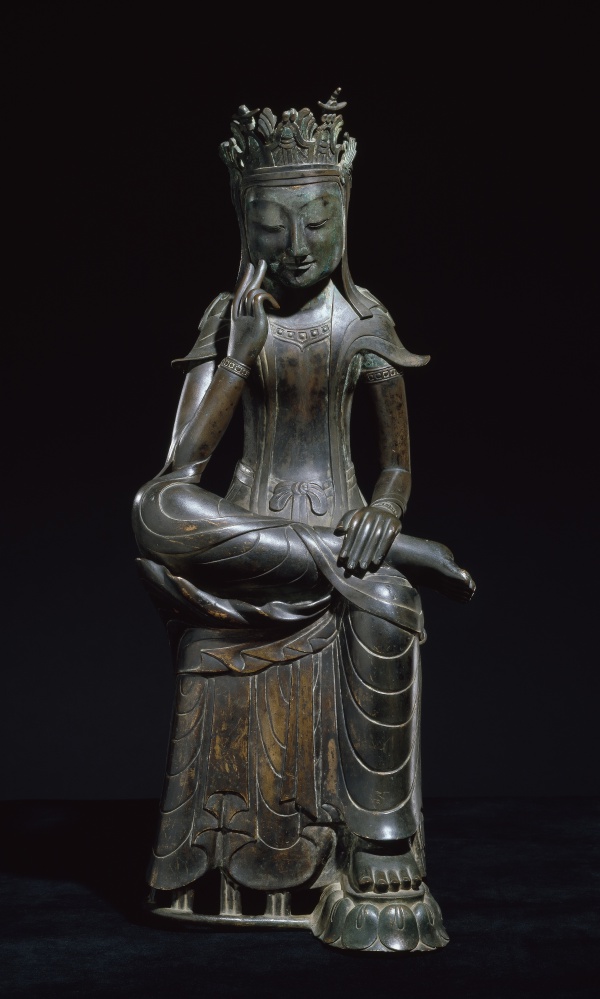Facts About Gilt-bronze Maitreya in Meditation (National Treasure No. 78)
The Gilt-bronze Maitreya in Meditation is a celebrated statue in Korean Buddhism, renowned for its stunning craftsmanship and profound historical significance. Currently displayed at the National Museum of Korea, this statue is one of the country's most cherished Buddhist sculptures and has been designated as Korea's 78th national treasure.
Created in the mid to late 6th century, the statue stands 83.2 centimeters tall and is composed of bronze with a gold finish. What is truly remarkable about this piece is the thinness of the bronze, less than a centimeter thick, highlighting the extraordinary skill of the artisans of that era.
The statue has an intriguing history. It was originally acquired by a Japanese individual in 1912 and later donated to the General Governing Department of Japan over Joseon. Since 1916, it has been housed at the National Museum of Korea.
The Maitreya is depicted in a semi-seated position on a stool, with a calm and serene facial expression that reflects deep meditation. The statue features intricate details such as a crown with multiple prongs, a scarf-like vestment, and a lotus flower-shaped base for the left foot. Although the statue originally included a halo, only fragments of it remain today. An X-ray analysis conducted in 1963 revealed the statue's exceptional craftsmanship, showing no defects or repairs and underscoring the use of rare materials and unique techniques.

 North Korea
North Korea